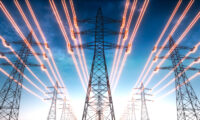How Much Electricity Does A Computer Use
For many people, there is not a day that goes by in which they don’t use a computer. Whether in the form of a desktop, a laptop, or even your tablet, it is easy to lose track of the number of times we come in contact with them. And given our consistent use along with the number of tasks that they assist us in completing, there is a fair bit of electricity that goes into their operation. On top of the different forms they can take are the various modes that they can be put into, so a lot goes into the amount of energy used. With all of this taken into account, the following is a brief guide on the amount of electricity used by a computer. Packed in as well are methods for improving the efficiency of your computer use in order to reduce energy waste. After reading through you should have a better understanding of the daily and long-term implications of your computer use and its subsequent electricity consumption.
How much electricity does a computer use
Desktop Electricity Usage
When it comes to your desktop computer, the average number of watts used range from 60-300. This amount is subject to change based on other factors such as the video card, use with an internet modem, printer, and some gaming function. Even when powered down, vampire energy can still see 1 watt of electricity being used while sleep mode can require around 5 watts. And something to note about desktop computers is that the box they are packaged in usually contains a number indicating the number of watts they use. That listed figure refers to the maximum amount of electricity that can be consumed, not the usual amount. As a result, the number listed may be an overestimation of the typical electricity usage.
Laptop Electricity Usage
In comparison to a desktop computer, a laptop consumes considerably less electricity. Roughly 30-70 watts are used, with that figure varying from model to model as some people will opt for specific features meant to enable certain draining functions. Much like with a desktop, electricity usage can be increased by factors including wifi and screen brightness. Even the size of the screen can influence the amount of electricity that a laptop uses. And because laptops are able to run for extended periods off of battery power alone, they are much more efficient than desktop computers which must remain plugged in.
Tablet Electricity Usage
Much like laptops, tablets use a smaller portion of electricity than desktop computers. On average a tablet goes through 15-30 watts. Without many of the same features that come coupled with the more extensive components of a larger computing device, the degree that extra features affect the total usage is slightly limited. And something else to think about when it comes to tablets is the fact that they are technically in sleep mode when they are not in use but have not been shut down. While a tablet is powered down, it too uses around 1 watt of electricity.
| Desktop | Laptop | Tablet |
|
|
|
Calculating Your Electricity Costs
Knowing the amount of electricity that your computer uses is one thing but understanding how to take that information and determine how much it is actually costing you is another. In order to figure out the actual cost of your computer you’ll need to know the number of watts it uses, the number of hours you’ve used the device, and the rate you pay in the form of cents per kilowatt-hour. From there you’ll be able to make the calculation using the following formula:
(Computer Use in Hours x Watts/1000) x cost per kilowatt-hour
To better paint the picture here is an example. Assume that your computer uses 280 watts/hour and you have spent 300 hours on it. The rate you pay is 20 cents/kilowatt-hour. Using our formula things would look like this:
(300×280/1000) x .20 = $16.80
Sleep Mode
One common question that many people have about their computers relates to whether or not they should put them in sleep mode or power them down fully when they are done using them. One common misconception about powering down computers is that it takes more electricity to power it off and on than it does to leave it in sleep mode. Another is that the habit of shutting a computer off damages the battery over time. In reality, both of these notions are false and the difference between putting a computer to sleep and shutting it down are minimal. You can base your decision of whether or not to do so on personal preference.
Energy Consumption Across Models
Mac
The iMac is Apple’s desktop computer and has evolved over the years with the most recent update coming in the summer of 2017 in the form of the iMac Pro. Pre-loaded with a host of features, the iMac is available in three forms: the Retina 5K 27-inch, the Retina 4K 21.5-inch, and the standard 21.5k. The maximum level of consumption is largely determined by the features and can be seen listed out below and grows significantly for the more advanced desktops.
| Retina 5K 27-inch | Retina 4K 21.5-inch | 21.5-inch |
| 217W | 161W | 74W |
PC
Contrasting the Mac desktops computer are a variety of PCs. With a number of desktops across brands, one thing does become clear. Overall there is greater efficiency from Apple’s computers than some other brands. The desktops listed below range in attributes but they cover a wide range of the computers and brands available on the market today.
| Dell XPS One 2710 (i7-3770S + GT 640M) | HP Touch Smart 610 (i7-2600 + HD 5570) | Dell OPtiPlex 9010 AiO (i7-3770S + HD 4000) | Toshiba DX735 (i5-2430M + HD 3000) |
| 186W | 132W | 96W | 79W |
Laptops
A broader look at the side-by-side of macbooks vs. non-apple products also highlights the reduced energy consumption capabilities of laptop devices. Note: both energy usage figures are maximums for an hour’s consumption.
| MacBook Pro 13-inch | Dell XPS 13 2-in-1 |
| 54.5W | 46W |
Tablets
In the same way as laptops, tablets also minimize the amount of energy consumed during use. Two of the top brands are the iPad Pro 10.5 and the Microsoft Surface Pro 5. Note: both energy usage figures are maximums for an hour’s consumption.
| iPad Pro 10.5 | Microsoft Surface Pro 5 |
| 30.4W | 36W |
Reducing Computer Electricity Consumption
When it comes to getting the most out of your computer as efficiently as possible, there are some things you can do to improve your usage. Instead of using a number of outlets for your computer and accessories, consolidate their plug in to a single power strip. This way when you are ready to power down your device, all you have to do is pull a single plug and electricity stops flowing to everything. Another easy switch is to opt for a laptop instead of a desktop computer. Not only does their portability enable greater flexibility in where they can be used, they also consume less energy in the process. Finally, when it comes to the settings on your computer, make sure you enable sleep mode to kick in after extended periods of inactivity. This will greatly reduce the electricity that is consumed as your computer waits for further use.
What our customers are saying
See why our power customers say we're the best electricity provider in Texas!
I was worried about getting electricity for my home through a prepaid company. I was calling around to see different rates then going through all the hassle of credit checks while dropping points each…
I have been with this company for several years and have been very happy since. Even when I moved, they made my usually stressful situation very easy and carefree. I recommend them to everyone that I…
I have enjoyed the service for 2 years now. In the beginning this service was planned to be temporary but with the service being so effective for me i decided to keep it for the long haul. I’m a happy customer.









